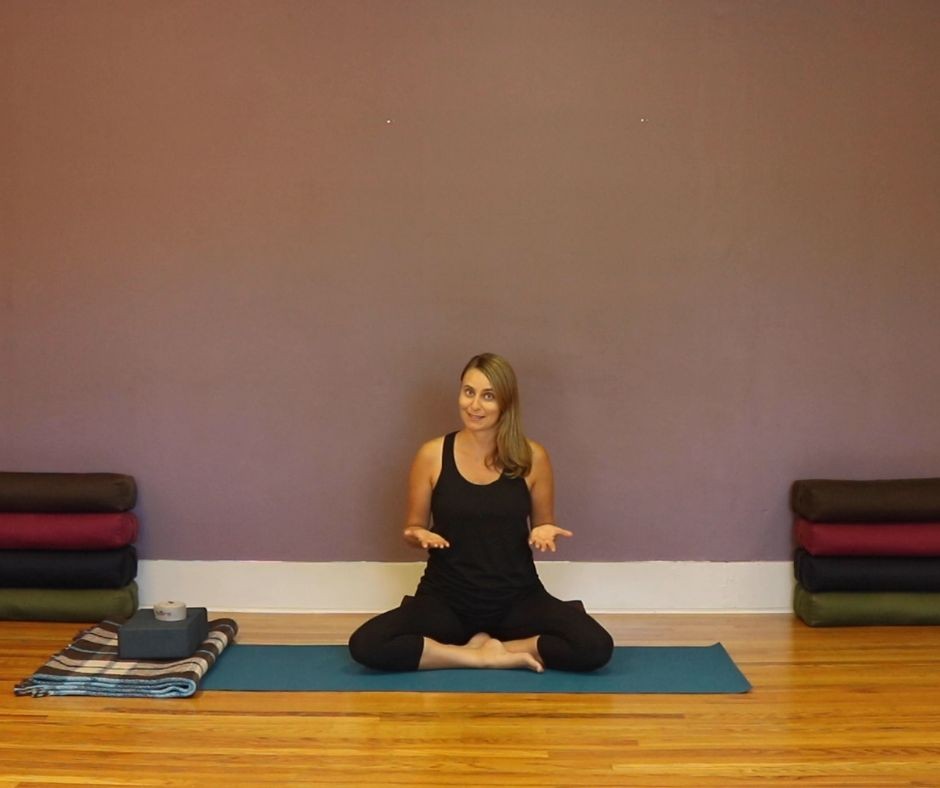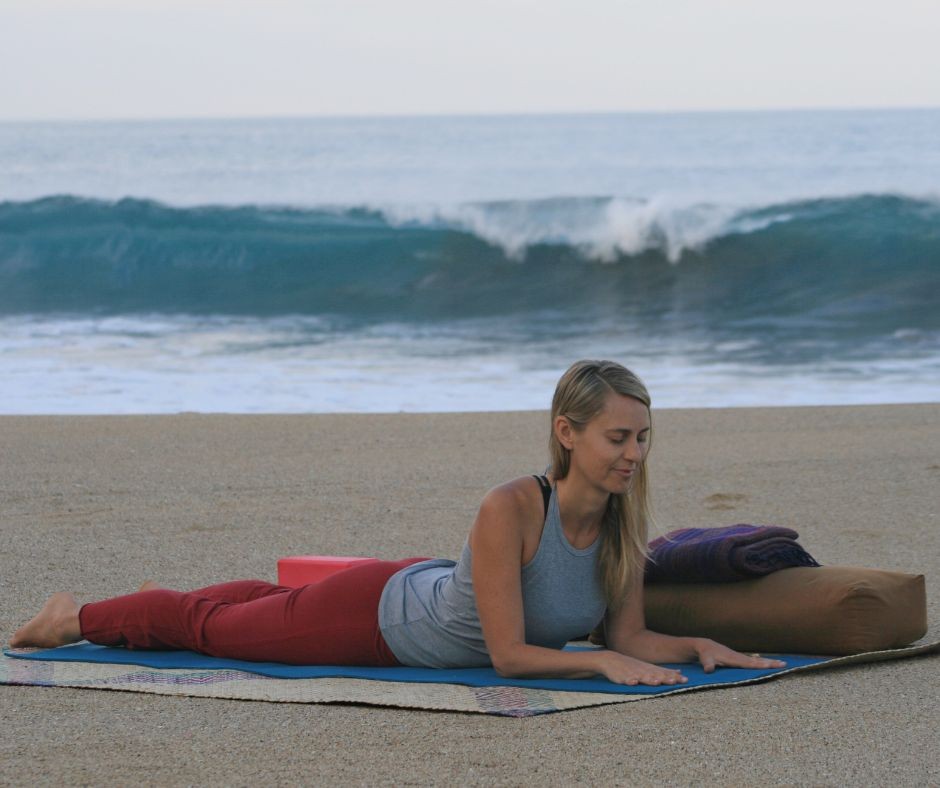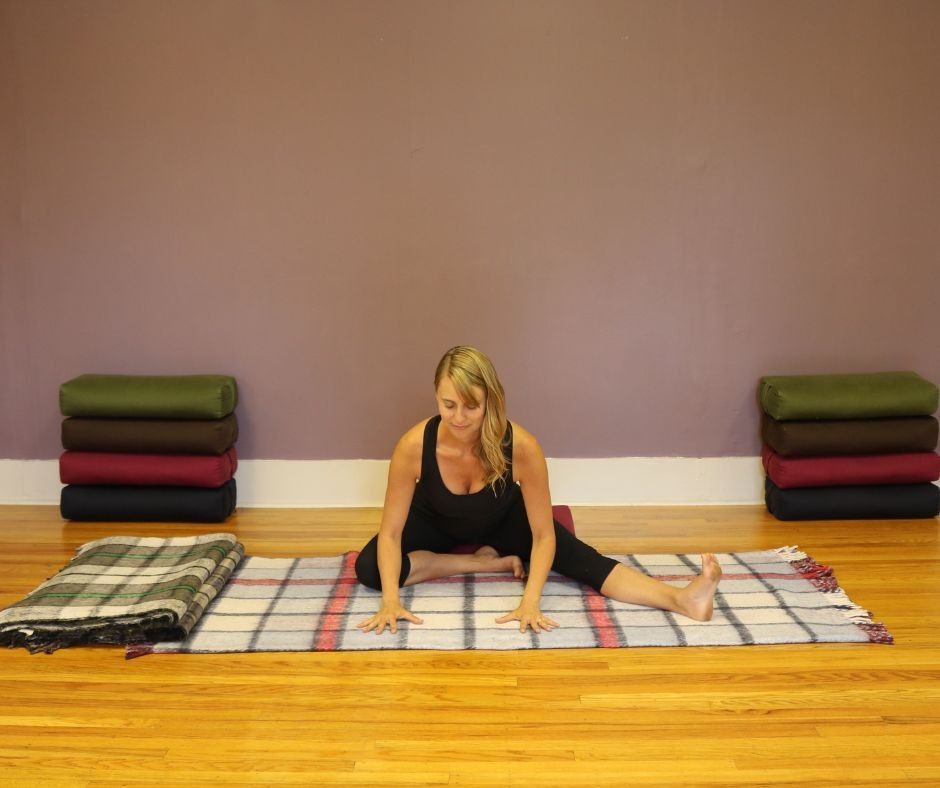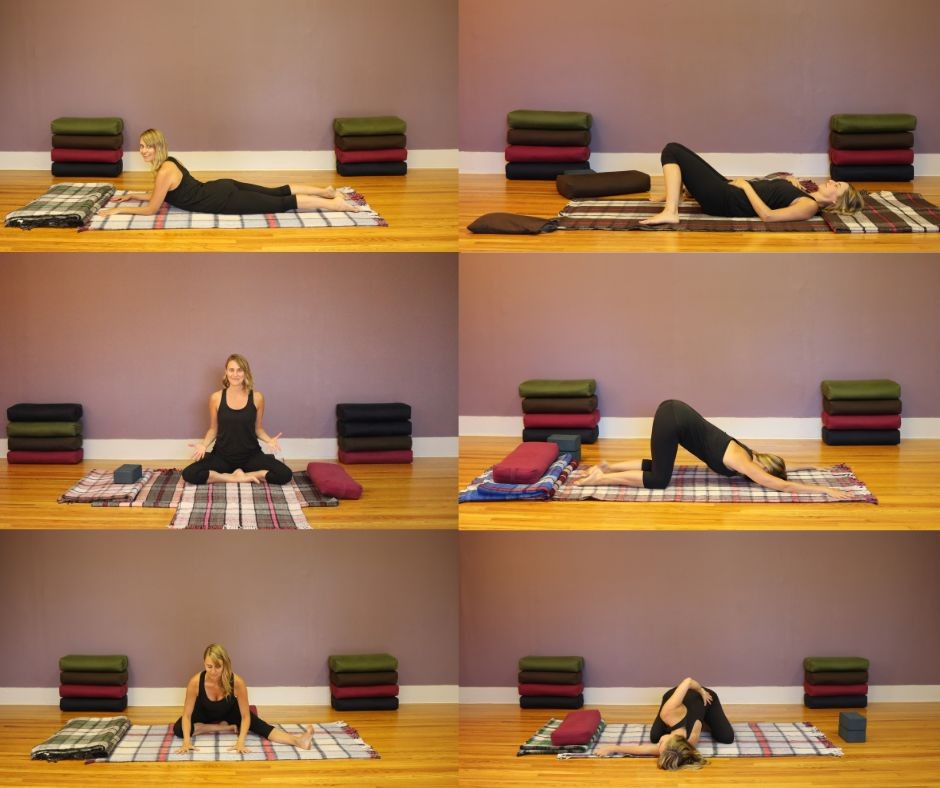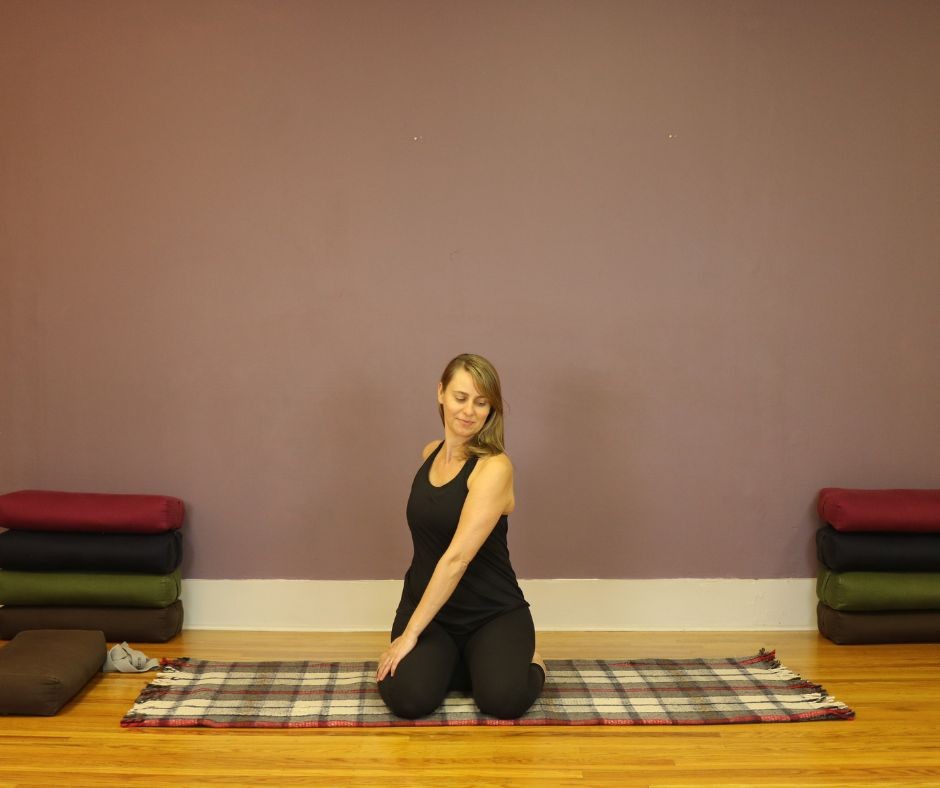"Restorative poses are poses of being rather than doing"
Judith Lasater
Restorative yoga is a specific style of yoga that emphasizes relaxing and receiving. The deliberate stillness once you’re in a restorative posture affects energetic and physical healing by calming the nervous system. Many restorative poses also gently activate and soothe the internal organs and the spine.
Watch the video and check out the post below to learn more.
Restorative yoga is one type of practice we can use to emphasize the healing or therapeutic benefits of yoga. In today’s busy world many people are hyper-stimulated and encountering a lot of stress. In a culture that is always “doing”, having a practice that focuses more on being simple, being quiet, and being at ease can be very helpful. And of course, taking time to rest and recuperate is essential if we want to maintain wellness.
If you’d like to bring more of a restorative quality into your practice you should first ask yourself – what would I like to restore? During restorative yoga we can do a sequence that is aimed at fostering deep rest, or restoring the nervous system, or restoring an organ system like the reproductive organs or digestive organs. All systems in the body are connected, so oftentimes we experience multiple benefits from a single restorative pose.
What makes a yoga practice restorative?
There are many ways we can make our yoga practice restorative. At times we can focus on moving blood and lymph into a particular area by squeezing and then decompressing the tissue. At other times, our focus might be more on rest and calming the nervous system. We could do this by supporting the head. When we support the head we help to restore the brain and we counteract the effects of mental stress. Another focus could be on supporting and moving the spine in various ways to create healing.
What is restorative yoga?
You might be familiar with the more common expression of restorative yoga today. Generally speaking, in restorative yoga we use lots of props and we usually hold postures with support. Many of the postures are done on the floor, but not all. For example, you could do a standing forward fold and support the head or a backbend with the help of a chair. These postures are still considered restorative yoga.
In restorative yoga we’re using postures that are designed to restore the body and mind in a very gentle way. During restorative yoga, we’re not really stretching. Instead we’re wanting to soften and receive the pose and the very simple and gentle benefits over time. This makes it different than yin yoga. In yin yoga we’re aiming to target the tissues and create some sensation with less support usually.
To learn more about how yin yoga and restorative yoga are different watch: What’s the difference between yin yoga and restorative yoga?
The larger history of yoga practice dates back at least 2000 years and includes physical and spiritual practices. While all types of yoga have the potential to be therapeutic, the more active or stronger physical forms may at times need to be tempered with slower more restorative poses. This is especially true if you have injuries, if you’re feeling fatigued, or if you’re under a lot of stress. Restorative yoga can also be especially helpful for women when menstruating. The use of extensive props, and attention to really supporting the body is very helpful during times of weakness or other limitations.
Restorative yoga was primarily developed by B.K.S Iyengar in response to seeing his students needing extra support at times. The restorative practice he developed was a way to adapt the practice when the body needed rejuvenation.
Some poses offer specific benefits depending on which area of the body is being gently opened and others provide broader rewards. Overall the restorative poses help to rejuvenate health physically, emotionally, energetically and mentally.
How does restorative yoga work?
Restorative yoga uses the support of props. Instead of looking for strong sensation, we want to ensure the body and mind is able to relax. As the posture is held, its important there is deep ease to get the full therapeutic effect. Watch the videos below to get an idea of a few common restorative postures and how to set them up properly.
Over time, restorative postures can provide a deep and gentle way for the body to open and release. These longer holds with support encourage blood and lymph to move into the deeper tissues and they also encourage other physiological changes to occur like changes in blood pressure and breath rate.
During restorative practice we usually encourage intentional and conscious relaxation. It’s especially important that you feel comfortable and supported. As you enter each posture you can check in to see whether there is tension in the jaw, the abdomen, or the back, and whether you need more cushions or blankets to feel supported. It is different than sleep, but make sure you’re comfortable.
Now you know: What is restorative yoga? and How does restorative yoga work? Thank you for reading and watching!

